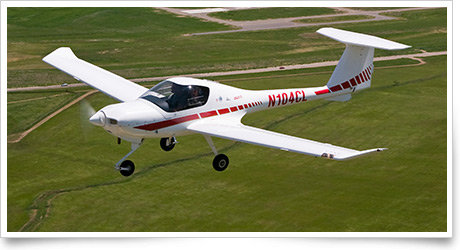| The following stories from the July 20, 2012, edition of AOPA ePilot were provided to AOPA members who expressed an interest in the particular subject areas. Any AOPA member can receive information tailored to their areas of interest by updating their preferences online. |
training tipsMultiple runways, multiple choices
The wind is brisk from the south, and you realize that the crosswind component would be greatly reduced if you could use Runway 18/36 for landing. Based on your preflight planning, it is neither closed nor restricted for use.
Contacting approach control, you are pleased to receive instructions to enter a left base leg for Runway 18, abbreviating your traffic pattern and providing a direct headwind on final approach. That, in turn, will lower your groundspeed at touchdown, letting you decelerate to taxi speed and exit the runway promptly, making airport operations more efficient. (Remember that as a student pilot making your arrival, the FAA says that you should not participate in any land-and-hold-short operations—LAHSO—that may be in progress.)
What would you have done if the controller had not offered Runway 18?
Traffic permitting, it may have been possible to request Runway 18 for landing and again for takeoff when departing for home. It won’t hurt your chances of getting the desired runway if you also notify ATC that you are a student pilot.
Numerous traffic-flow-management options give controllers flexibility to speed the flow and increase safety margins for pilots of aircraft large and small. For example, on a sufficiently long runway, taking off from an intersection may be offered by ATC or requested by pilots—especially to avoid extensive taxiing or overheating the aircraft’s engine on a hot day.
Faced with choices, you may have to decide quickly. As you hold short of the active runway for departure with a heavy aircraft on final approach, ATC may offer you an “immediate takeoff” designed to spare you a long wake turbulence hold that would be required after the heavy lands.
Don't rush your pretakeoff procedures. If any offered alternative to your departure plan makes you feel uncomfortable or pressured, decline. The final decision is yours.
Sometimes, terminal information broadcasts may note that an alternative runway, perhaps better aligned with the wind, is available. If it isn't stated, and using a different runway seems to be the safest option, by all means, go ahead and ask. training productsSporty’s VFR Communications appStill stumbling over your radio calls? The Sporty’s VFR Communications app for iPhone or iPad breaks the topic into eight subject areas and 23 individual video segments. The app features 3-D animations, in-flight video, and real-world communications scenarios. Air traffic control, emergency situations, and nontowered airports are covered. The app sells for $34.99.
Note: Products listed have not been evaluated by ePilot editors unless otherwise noted. AOPA assumes no responsibility for products or services listed or for claims or actions by manufacturers or vendors. final examQuestion: What is an SDF approach?
Answer: SDF stands for simplified directional facility. This nonprecision approach is similar to a localizer-only approach, except that the course may be offset from the runway. The amount of offset is generally not more than 3 degrees. Even though the width of an SDF approach is slightly greater than that of an ILS localizer course (fixed at either 6 or 12 degrees), an SDF approach can be just as accurate if flown precisely. SDF approaches are usually designed for locations where an ILS or localizer approach would not work because of obstructions. For a review of instrument flying knowledge, check out some of the Air Safety Institute’s interactive courses.
Got a question for our technical services staff? Email [email protected] or call the Pilot Information Center, 800/872-2672. Don’t forget the online archive of “Final Exam” questions and answers, searchable by keyword or topic. |
 Arriving from the north at a bustling towered airport, you listen as the automatic terminal information service (ATIS) broadcast provides wind and weather information and informs you that
Arriving from the north at a bustling towered airport, you listen as the automatic terminal information service (ATIS) broadcast provides wind and weather information and informs you that 

